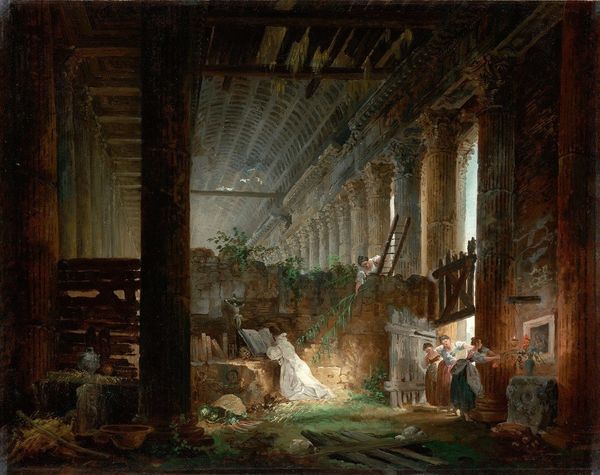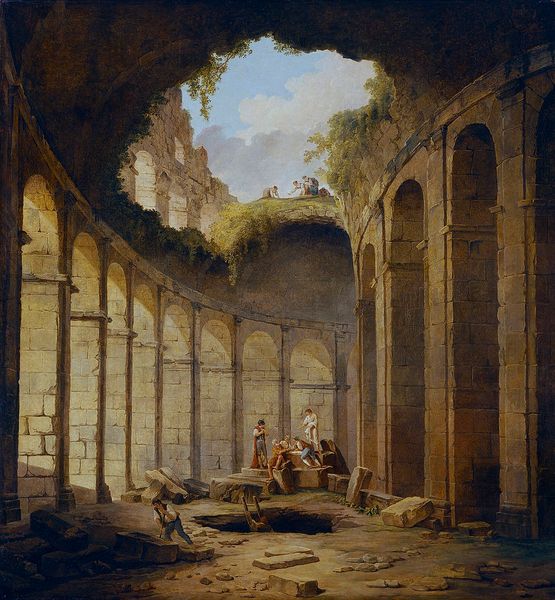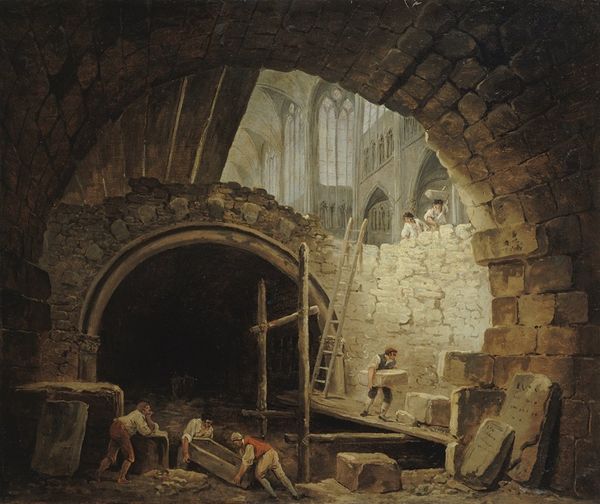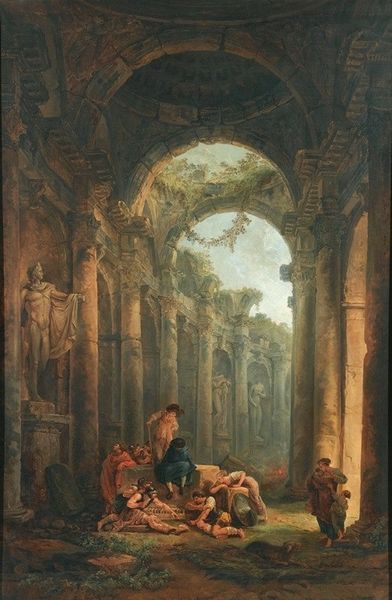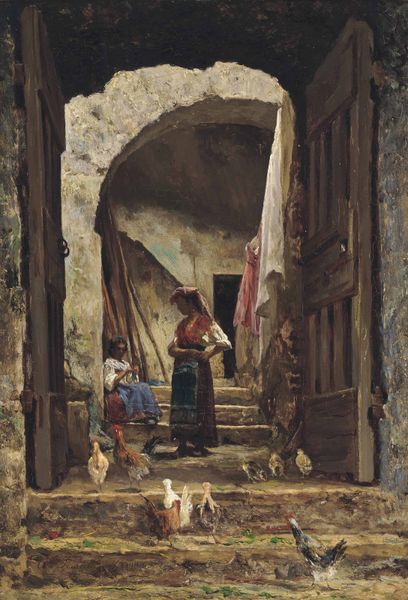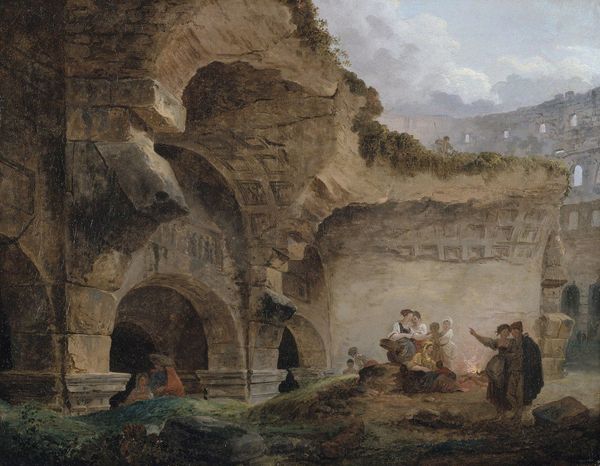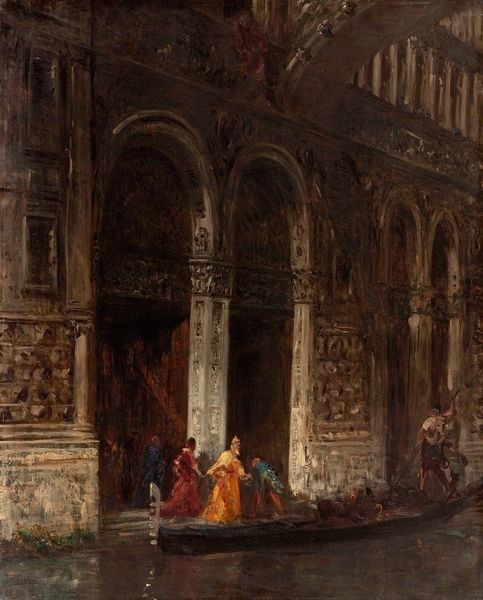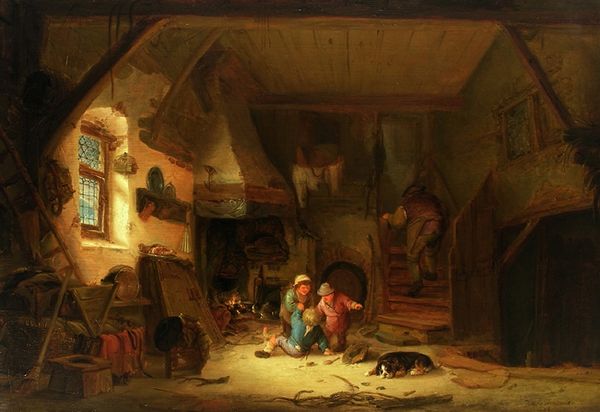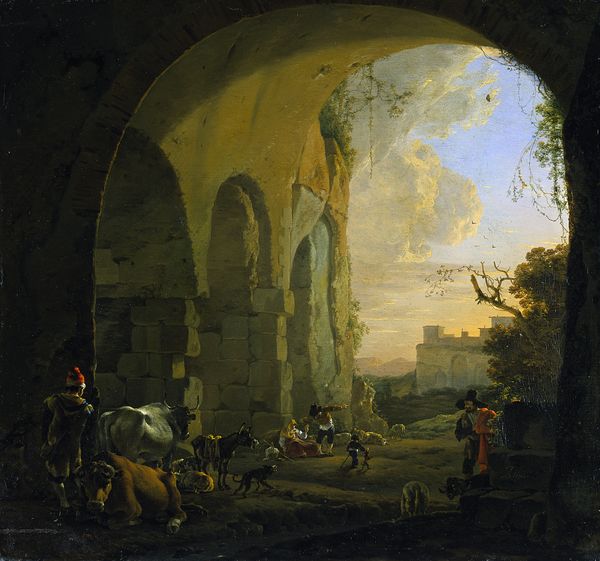
painting, oil-paint
#
painting
#
oil-paint
#
landscape
#
figuration
#
romanticism
#
history-painting
#
ruin
Copyright: Public Domain: Artvee
Editor: Hubert Robert’s oil painting, "Hermit in the Colosseum," dated 1790, presents an intriguing scene. The colossal architecture dwarfs the figures within, giving the scene a sense of melancholic grandeur. The composition draws the eye upward toward the aperture above. How might we unpack Robert’s artistic choices in this piece? Curator: We can consider how the formal elements of the work contribute to its meaning. Observe the contrast between the rough texture of the Colosseum ruins and the smooth, almost idealized, depiction of the human figures. What does this contrast suggest about the relationship between humanity and history, perhaps even between mortality and monumentality? Editor: That’s a compelling observation. It does seem to emphasize the transient nature of human existence against the backdrop of enduring architecture. Curator: Precisely. Further, the strategic placement of light becomes significant. Note the limited source of illumination from the opening above. The chiaroscuro effect intensifies the drama, heightening the viewers perception of the scene, framing the subjects in reverence, prayer and perhaps mourning. Consider the way that the composition draws your gaze towards the figures engaged in some sort of ceremony. Is this reverence the crux of the image? Editor: Definitely. The light enhances the spiritual dimension of the figures against the ruined setting. The artist also makes a point about composition when taking the natural versus artificial setting of a painting in contrast with the architectural background and how that lends itself to interpreting the context of Robert's intentions with religious implications in his piece. Curator: You raise a compelling point about the use of lighting in juxtaposition to ruin architecture. That seems to capture the tension between decay and potential new growth of the religious following that makes itself evident in this period in history. Editor: Reflecting on the painting’s visual elements deepens our engagement with the historical themes at play. It is powerful to recognize the value that can emerge from analyzing the components in play with composition, technique and setting to understand artistic intentions.
Comments
No comments
Be the first to comment and join the conversation on the ultimate creative platform.
